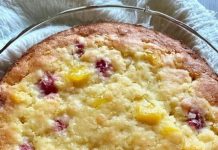HOW TO MAKE IT :
- Line two large sheet pans with parchment paper— make sure the parchment paper lays flat on the pan so your macarons don’t become lopsided.
- Add the egg whites to the bowl of a stand mixer. Using the wire whisk, beat the egg whites on medium speed until they become frothy. With the mixer on medium speed, slowly add in the caster sugar. I like to add about 1 teaspoon of sugar every 2-3 seconds. Adding all of the sugar should take about 2 minutes.
- Once you’ve added all of the sugar, turn the mixer to medium-high and beat the egg whites until they form stiff peaks.
- While the egg whites are beating, add the powdered sugar, almond flour, and vanilla bean powder to a fine mesh sieve set over a large bowl. Sift the dry ingredients together— if any large lumps remain in the sifter, discard them— don’t force them
through. - Once the egg whites have reached stiff peaks, add the dry ingredients to the egg whites and gently fold them to combine.
- Once all of the dry ingredients have been incorporated into the egg whites, it’s time for macaronage (deflating the meringue). Smush the meringue against the side of the bowl and then fold it back together. Repeat 2-3 times or until the batter reaches the “lava stage”.
- Once the batter has reached the “lava stage”, you should be able to draw a figure 8 without the meringue stream breaking.
Transfer the batter to a piping bag fitted with a round tip— I use a Wilton #10. - Hold the piping bag straight up and down. Pipe 1” circles that are 1-2” apart on the parchment lined sheet pan.
- Once you’ve filled the tray, hold it approximately 6 inches off the counter and then drop it straight down. Repeat 5 times, or until any large air bubbles have popped. If you’d like to decorate the macarons with sprinkles, add them after you’ve popped any air bubbles— but don’t wait too long as the sprinkles won’t stick if the skin has already formed. Set the macarons aside to rest until they form a skin. This will typically take 20-25 minutes although in humid climates it can take up to an hour. You’ll know the macarons are ready to bake when they are no longer sticky to the touch.
- While the macarons are resting, preheat your oven to 315F. (See notes) Bake the macarons in a preheated oven for 12-15 minutes, or until they are no longer wet in the center.
- Leave the macarons on the pan until they have cooled to room temperature.
For the Filling
- Add the softened butter to the bowl of a stand mixer fitted with the paddle attachment. Beat the butter on high speed until light and airy— about 1 minute.
- Add the heavy cream and vanilla bean paste. Mix on low speed until just combined.
- With the mixer on low, slowly add in the powdered sugar. When all of the powdered sugar has been added, turn the mixer speed to high and whip the icing until it becomes smooth and airy— about 2 minutes.
- Transfer the icing to a piping bag and set it aside.
Assemble & Age
- Place the macarons in similar sized pairs. Pipe a small circle of icing onto the flat side of one macaron. Place the second macaron on top and press down gently to push the icing to the edges. Repeat with the remaining macarons.
- Store the macarons in an airtight container in the refrigerator overnight to age. Store macarons in an airtight container in the refrigerator for up to 3 days. Bring the macarons to room temperature before serving.
Notes
- For best results, use a kitchen scale to measure the macaron shell ingredients.
- Soft vs. Stiff Peaks: A soft peak leans to the side and curls at the top. A stiff peak stands straight up with the peak pointing upwards.
- If your almond flour seems wet or oily, bake it at 300F for 8-10 minutes to dry it out. You don’t want it to brown— just dry.
- I always recommend using a metal bowl when making macarons as the eggs whites can attach to metal easier than they can to glass. This allows the meringue to stabilize more while also incorporating more air.
- Proper Folding Technique: Move the spatula in a “j” shape by cutting the middle of the meringue and then sweeping the spatula along the bottom of the bowl to one side and then back over the top. Turn the bowl 90 degrees and repeat.
- Proper Oven Temperature: Most home ovens do not have accurate temperature gauges— therefore it’s important to have an oven thermometer so you truly know what temperature your oven is. You want the temperature in your oven to be as close to 315 degrees F as possible.
- Sheet Pans. My number one trick for perfect macarons is to double up your sheet pans! I use USA Pans— good quality aluminum pans— and I double them to insulate the macarons and prevent the bottoms from becoming overheated (which could lead to browning and/or spreading).
- Figure 8. My second trick for perfect macarons is to test the meringue often during the macaronage stage (see step by step instructions). Macaronage is by far one of the most common problems encountered when making macarons because it has to be done perfectly! Doing the figure 8 test often (after every fold) will ensure that you achieve the perfect consistency every time!









